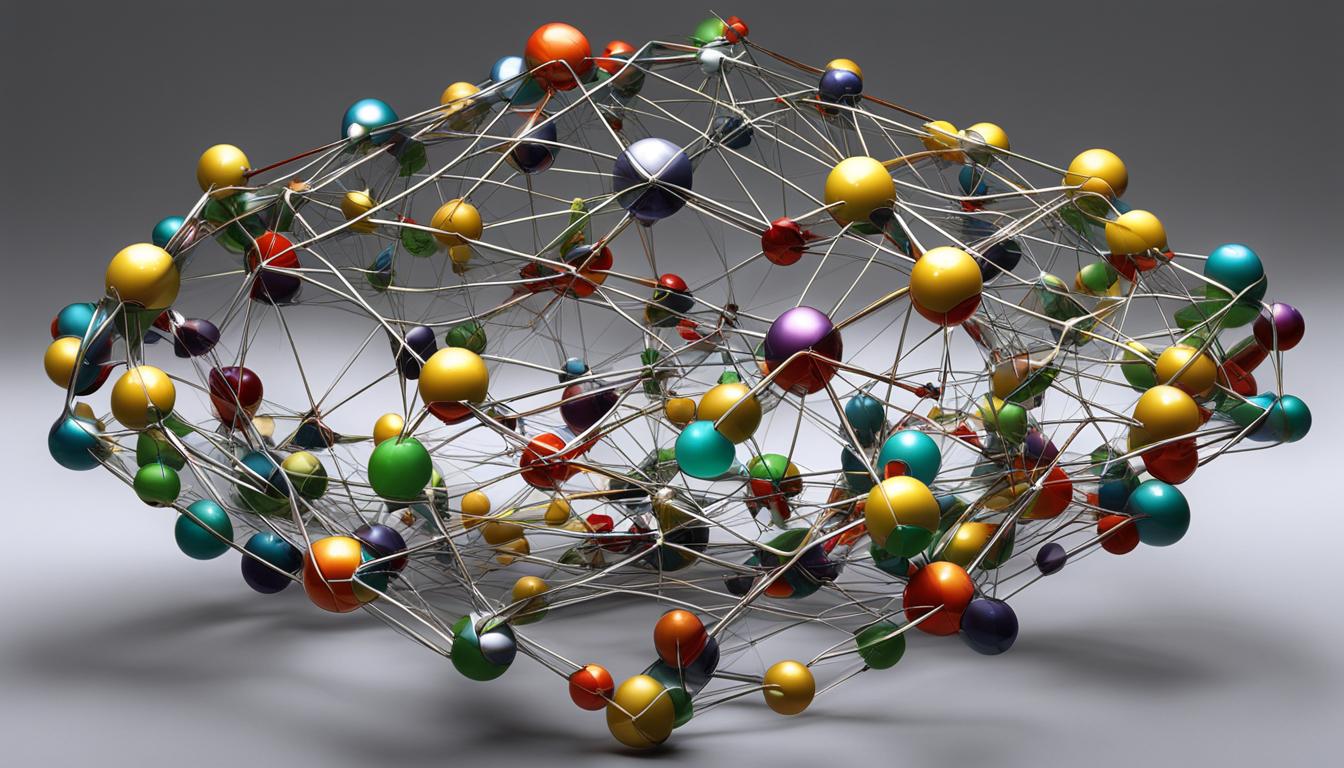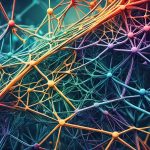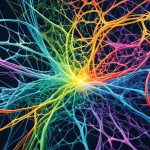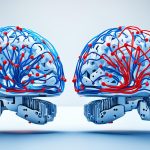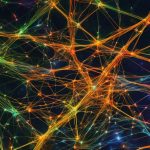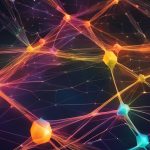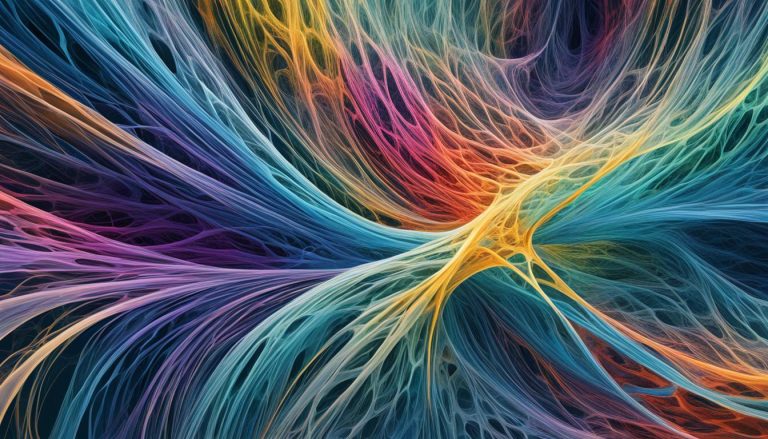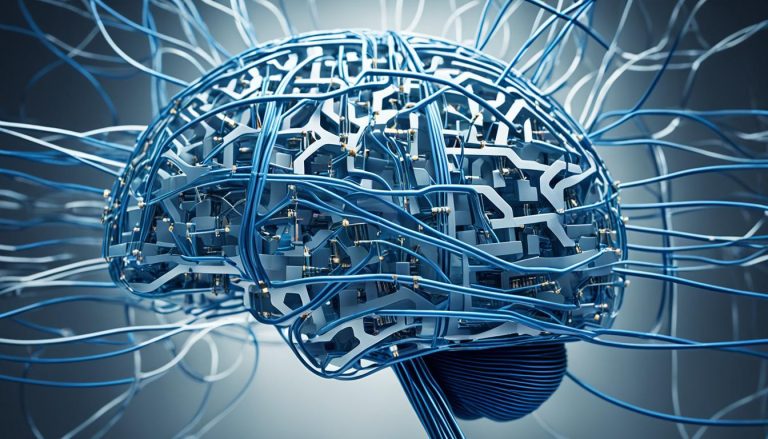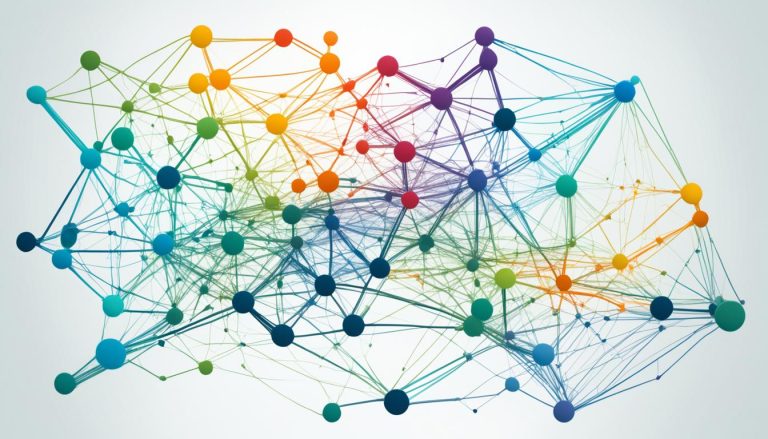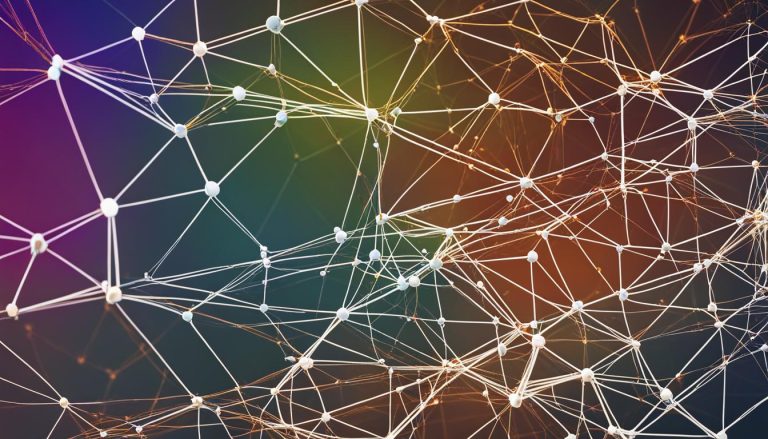Capsule Networks are revolutionizing hierarchical learning and neural processing in various fields, including recommendation systems. These networks have the potential to overcome the limitations of traditional machine learning methods by incorporating additional information and improving recommendation performance. With their hierarchical structure and dynamic routing algorithms, Capsule Networks are reshaping the way we think about neural networks.
Deep learning has been a game-changer in the field of AI, enabling computers to learn and make decisions like humans. However, traditional neural networks have inherent limitations in capturing complex relationships and representing hierarchical structures.
Capsule Networks tackle these challenges by introducing the concept of capsules, which are groups of neurons that not only encode the presence of a feature but also its properties such as orientation, size, and position. By capturing spatial hierarchy and relationships between different features, Capsule Networks offer more accurate and robust pattern recognition capabilities.
In recommendation systems, Capsule Networks have the potential to enhance performance by capturing higher-order relationships between items and users, enabling more accurate recommendations even in data-sparse and cold-start scenarios. By leveraging the knowledge graph and using hierarchical routing algorithms, Capsule Networks can effectively model complex patterns and improve the accuracy of personalized recommendations.
As the research in Capsule Networks continues to evolve, we can expect to see further advancements in hierarchical learning and neural processing. These networks have the potential to reshape various fields, from recommendation systems to computer vision, and push the boundaries of AI technology. Stay tuned for more updates on the exciting developments in Capsule Networks!
The Challenges of Recommendation Systems and the Role of Capsule Networks.
Recommendation systems play a crucial role in personalizing user experiences and driving engagement in various domains, from e-commerce platforms to content streaming services. However, these systems often face significant challenges that impact their effectiveness. Two common obstacles are data sparsity and cold-start problems.
Data-sparse problems arise when recommendation systems have limited or sparse user-item interactions available for analysis. This sparsity hampers the systems’ ability to capture accurate and comprehensive user preferences and leads to suboptimal recommendations.
Cold-start problems, on the other hand, occur when new users or items enter the system and have insufficient historical data. This lack of information poses a challenge for collaborative filtering-based recommendation algorithms, which heavily rely on past interactions to make accurate predictions.
To address these challenges, researchers have been exploring innovative approaches that leverage additional information sources and advanced machine learning techniques. One such approach is the use of knowledge graphs, which incorporate domain-specific knowledge and explicit relationships between entities.
Knowledge graphs provide a structured representation of the available information, enabling recommendation systems to go beyond simple item-item or user-user relationships. By incorporating the knowledge graph into the recommendation process, algorithms can potentially overcome data sparsity and cold-start problems.
Another promising development is the application of hierarchical graph capsule networks. These networks extend the concept of capsule networks, which were introduced to capture richer spatial relationships between features in image recognition tasks.
Hierarchical graph capsule networks take advantage of the hierarchical structure of knowledge graphs and leverage the relationships between entities at different levels of abstraction. By incorporating this hierarchical information, these networks enable more refined feature representation and better understanding of complex relationships within the knowledge graph.
Utilizing capsule networks in recommendation systems can enhance the modeling of user preferences, improve the accuracy of recommendations, and mitigate the impact of data sparsity and cold-start problems.
| Challenges | Solutions |
|---|---|
| Data sparsity | Incorporation of knowledge graphs to capture explicit relationships between entities and facilitate more robust recommendations. |
| Cold-start problems | Utilization of hierarchical graph capsule networks to leverage the hierarchical structure of knowledge graphs and enhance feature representation. |
Understanding Capsule Networks and Hierarchical Routing.
Capsule Networks have emerged as a groundbreaking approach in pattern recognition and hierarchical learning. Unlike traditional neural networks that rely on individual neurons, Capsule Networks utilize capsules to capture spatial hierarchy and establish meaningful relationships between different features.
What sets Capsule Networks apart is their ability to recognize the spatial arrangement of features. This spatial hierarchy aids in understanding the structural composition of an object or scene, leading to more robust pattern recognition. By comprehending the spatial context, Capsule Networks can better understand the relationships between features, resulting in an enhanced understanding of the data.
One of the key mechanisms that enable Capsule Networks to route information effectively is hierarchical routing. This routing process weights the importance of relationships between capsules and determines how information is transmitted through the network.
“Capsule Networks use hierarchical routing to route information between capsules based on the importance of relationships.”
During hierarchical routing, Capsule Networks assign higher weights to the capsules that exhibit stronger relationships, enabling important information to flow efficiently through the network. This routing algorithm ensures that relevant features and their relationships are given greater weight, promoting accurate pattern recognition.
The hierarchical structure of Capsule Networks, along with the spatial hierarchy captured by capsules and the effective routing process, enhances the network’s ability to recognize complex patterns and objects in various applications.
This image showcases the spatial hierarchy recognized by a Capsule Network. Each capsule captures a different level of detail and represents relationships between various parts of the object. The routing process allows the network to effectively piece together these fragments of information, resulting in a comprehensive understanding of the object’s spatial structure.
Capsule Networks’ utilization of capsules and hierarchical routing offers significant advantages in pattern recognition tasks, making them valuable tools in computer vision, natural language processing, and other domains where capturing spatial relationships is crucial.
Dynamic Routing: Enhancing Pattern Recognition Efficiency.
Dynamic routing is a pivotal aspect of Capsule Networks that greatly enhances pattern recognition efficiency. By adjusting routing weights based on the agreement between capsule outputs, dynamic routing enables better feature representation, reduces the impact of outliers, and captures more complex relationships between features.
Unlike traditional neural networks, Capsule Networks utilize capsules instead of neurons. These capsules capture spatial hierarchy and the relationships between different features, facilitating more accurate and robust pattern recognition. With dynamic routing, Capsule Networks are able to adapt and optimize their connections based on the specific requirements of the input data.
The role of dynamic connection weights in dynamic routing cannot be overstated. These connection weights allow Capsule Networks to dynamically adjust the flow of information between the capsules, enhancing the network’s ability to recognize and represent complex patterns. By prioritizing the most relevant and reliable features, dynamic routing ensures that the network stays focused on the most discriminative aspects of the data.
One of the key advantages of dynamic routing is its ability to handle outliers. Traditionally, outliers can severely impact the performance of neural networks, leading to suboptimal results. However, dynamic routing allows Capsule Networks to effectively minimize the influence of outliers by adjusting the routing weights accordingly. This enables a higher level of robustness and accuracy in pattern recognition tasks.
Moreover, the dynamic nature of routing in Capsule Networks enables the network to capture and recognize complex relationships between features. By incorporating information about the spatial arrangement of features, Capsule Networks can better understand the context and meaning behind different patterns. This leads to more meaningful and interpretable representations of the input data.
Dynamic routing is a critical component in enhancing the efficiency of pattern recognition in Capsule Networks. By dynamically adjusting routing weights, Capsule Networks are able to improve feature representation, mitigate the impact of outliers, and capture intricate relationships between features. This advanced routing mechanism greatly contributes to the accuracy and efficiency of Capsule Networks in various AI learning tasks.
Next, we will explore the evolution of artificial neurons and the rise of convolutional neural networks (CNNs), shedding light on their contributions to image classification.
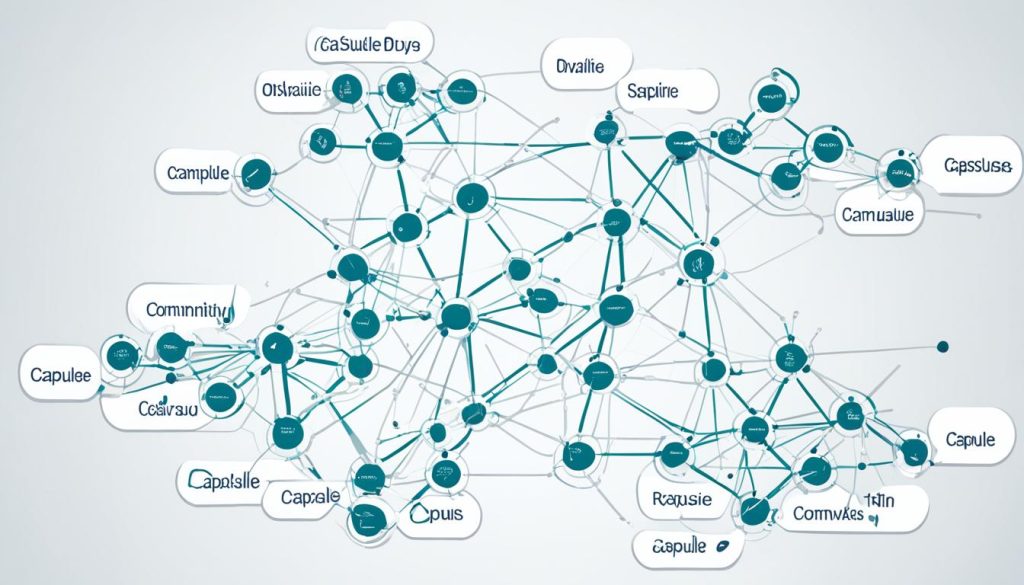
The Evolution of Artificial Neurons and the Rise of CNNs.
The field of image classification has undergone a dramatic transformation with the development of artificial neurons and the rise of convolutional neural networks (CNNs). Through continuous advancements, researchers have moved beyond simple neuron models and have introduced more complex architectures to handle the challenges posed by intricate data.
One of the breakthrough moments in image recognition tasks came with the introduction of CNN architectures like AlexNet. AlexNet demonstrated remarkable performance, surpassing previous methods and laying the foundation for the success of CNNs in computer vision applications.
Deep neural networks, particularly CNNs, have become the go-to methodology for image classification. They leverage the power of artificial neurons to analyze and process visual data, enabling advanced image recognition and categorization.
It’s fascinating to witness how the development of artificial neurons has paved the way for the success of CNNs in image classification tasks. The combination of deep learning algorithms and convolutional neural networks has revolutionized computer vision, pushing the boundaries of AI technology.
A key element that enables the training of CNNs is the backpropagation algorithm. This powerful technique allows the network to learn from labeled data, iteratively adjusting the weights and biases of the artificial neurons to improve its accuracy in image classification. Through backpropagation, CNNs can effectively extract relevant features and recognize patterns, leading to robust and reliable image classification results.
To illustrate the impact of CNNs in image classification, consider the example of object recognition. By feeding a trained CNN with an image, the network can accurately identify the objects within the image and assign appropriate labels. This capability has applications in various domains, including autonomous vehicles, medical imaging, and security systems.
The Backpropagation Algorithm: Powering CNNs for Image Classification
The backpropagation algorithm plays a pivotal role in training CNNs for image classification tasks. It involves the iterative process of updating the network’s artificial neurons’ weights and biases based on the discrepancy between the predicted output and the desired output.
During the training phase, labeled images are presented to the CNN, and the forward pass is executed, leading to a predicted output. The error between the predicted output and the expected output is then calculated. This error is propagated backward through the network using the chain rule, allowing the algorithm to determine how to adjust the weights and biases of the artificial neurons to minimize the error.
This iterative process continues until the network’s performance converges to an optimal state, where it achieves a high level of accuracy in image classification. The backpropagation algorithm enables CNNs to learn and extract meaningful features from images, contributing to their exceptional performance in various computer vision tasks.
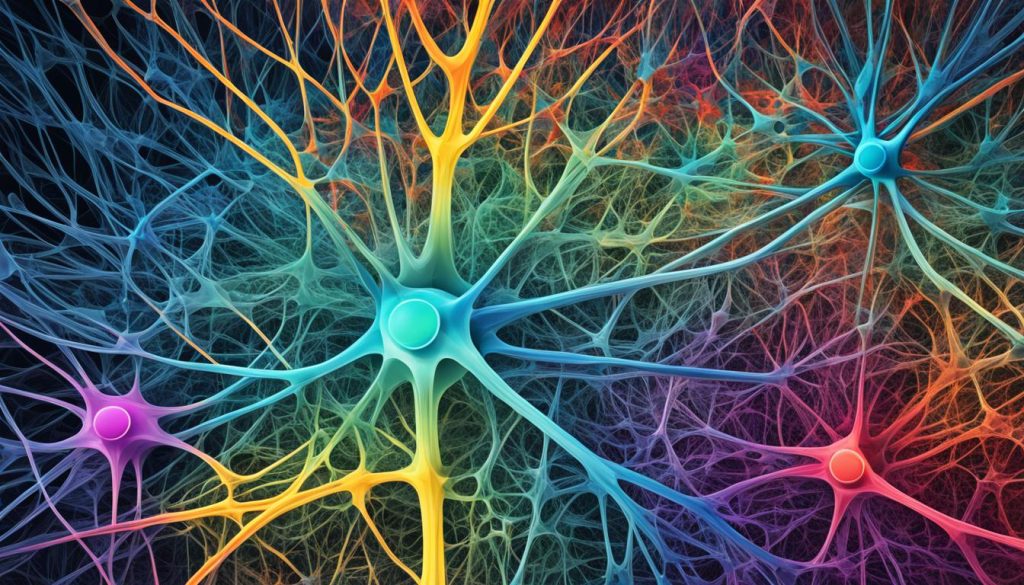
The image above showcases the power of CNNs in image classification. With their ability to identify and recognize objects within images accurately, CNNs are invaluable in numerous applications, from self-driving cars to facial recognition systems.
In conclusion, the evolution of artificial neurons and the rise of CNNs have revolutionized the field of image classification. Through the power of convolutional neural networks and the backpropagation algorithm, CNNs can effectively analyze visual data, extract meaningful features, and accurately identify objects within images. These advancements in AI technology are driving various industries forward and shaping the future of computer vision.
Conclusion.
Capsule Networks are revolutionizing hierarchical learning and pattern recognition, offering a more accurate and efficient AI technology.
By capturing the spatial hierarchy and leveraging knowledge graphs, Capsule Networks have the potential to transform various fields, including recommendation systems and computer vision.
As research in this area continues to evolve, Capsule Networks are expected to play a significant role in advancing pattern recognition capabilities and pushing the boundaries of AI technology.
FAQ
What are Capsule Networks and how do they redefine hierarchical learning?
Capsule Networks are a revolutionary approach to hierarchical learning and neural processing. Unlike traditional neural networks that use neurons, Capsule Networks use capsules to capture spatial hierarchy and relationships between features. By understanding the spatial arrangement of features, Capsule Networks offer more accurate and robust pattern recognition capabilities, reshaping the way we think about neural networks.
How can Capsule Networks improve recommendation systems?
Recommendation systems often face challenges such as data sparsity and cold-start problems, which impact their accuracy and performance. Capsule Networks, particularly hierarchical graph capsule networks, provide a promising solution by capturing higher-order relationships and leveraging knowledge graphs. By incorporating additional information, Capsule Networks can improve recommendation performance and overcome the limitations of traditional machine learning methods.
What is the role of hierarchical routing in Capsule Networks?
Hierarchical routing is a fundamental component of Capsule Networks that enables information to be routed between capsules based on the importance of relationships. This dynamic routing algorithm allows Capsule Networks to adjust routing weights based on the agreement between capsule outputs, enhancing pattern recognition efficiency. It enables better feature representation, reduces the impact of outliers, and captures more complex relationships between features.
How are Capsule Networks different from traditional neural networks?
Capsule Networks differ from traditional neural networks by utilizing capsules instead of neurons. These capsules capture spatial hierarchy and relationships between different features, providing a more detailed understanding of the data. By incorporating this hierarchical structure and dynamic routing algorithms, Capsule Networks offer more accurate and robust pattern recognition capabilities.
How have artificial neurons and CNNs transformed image classification?
The development of artificial neurons and the rise of convolutional neural networks (CNNs) have greatly advanced image classification. Starting from simple neuron models, researchers introduced recurrent networks and deep belief networks to handle complex data. The breakthrough came with the introduction of CNN architectures like AlexNet, which achieved remarkable performance in image recognition tasks. CNNs have become the methodology of choice for computer vision, pushing the boundaries of AI technology.
What is the future role of Capsule Networks in AI technology?
Capsule Networks are redefining hierarchical learning and pattern recognition, offering more accurate and efficient AI technology. As research in this area continues to evolve, Capsule Networks are expected to play a significant role in advancing pattern recognition capabilities and pushing the boundaries of AI technology. They have the potential to revolutionize various fields, including recommendation systems and computer vision.

